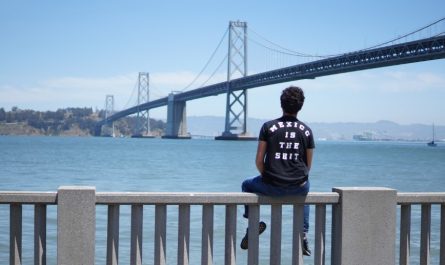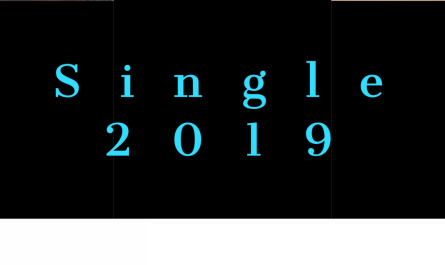Establishing LGBT diversity in advertisement not only helps your business create a deeper connection to its customer base but it also reaffirms the LGBT community’s sense of having a place in society and being “seen”.
Before you get started with your inclusive ad campaign, though, there are some things you should know. Let’s dive right into some of the most important dos and don’ts:
Do:
Commit. You’ve changed your brand’s social media profile photo to a rainbow for Pride Month? That’s great, but if that’s how far you’re willing to go, I would advise you not to go there. Your rainbow profile picture will open up a discourse about your entire brand, what you stand for and what your stance on LGBT rights has been in the past. If your history is a bit spotty there, pretending to be inclusive with a mere profile photo will do your brand more harm than good. If you want to become a more inclusive brand, start by being inclusive* as a corporation first. Invite diversity into your team. Listen to your diverse team members. Then go out and build a relationship with the community you are addressing. Above all though, consistency means standing with your inclusive values no matter what, which leads us straight to the next point.
*Want to know how you can turn your business around towards a more inclusive path? Stay tuned for a post on just that up soon!
Don’t:
Be a fair-weather ally. If you get negative backlash after airing an inclusive ad in a conservative environment, do not back down! You committed to inclusiveness and diversity and you have nothing to gain from pulling your ad: The conservative groups already dislike your brand, don’t make your target group (the LGBT community) doubt your brand’s integrity and loyalty to them. It’s important to understand that these negative reactions are, in most cases, short-lived. Most corporations report periods of a few days or weeks of critical comments. Businesses have adopted a low-key method* to handle such expressions of discomfort and only very rarely do they resort to the decision to abandon a gay marketing strategy. Market analysts agree that backtracking on such efforts first and foremost sends ambiguous signals to and raises questions from the media, customers, and shareholders (Witeck & Combs, 2006).
*Curious to know how to deal with potential backlash? Stay tuned, a dedicated blog post about this is in the works!
Do:
Be authentic. Include real people in your ad. While some straight Hollywood stars have been highly successful at accurately portraying members of the LGBT community, in most cases, simply including an actual LGBT person is the much more low-risk solution. Being an inclusive business also means employing LGBT actors for your ad! “Keeping it real” will lead to a deeper connection to viewers, who will react best to authentic stories. An added benefit of using genuine people is that they can give you potential insights on making your campaign even more inclusive. Plus, they can help you with the next one:
Don’t:
Use stereotypes. This is crucial. Resorting to tired stereotypes is risky and has the potential to harm your brand image. It also shows you don’t know your target group very well. There are plenty of examples out there of brands using tired LGBT stereotypes to target the community. An actor playing up age-old stereotypes like the “butch” lesbian woman and the feminine gay man is tired at best. The easiest way to steer clear of the stereotype trap is by simply employing a diverse group of LGBT people for your ad. Show real people in real situations.
Do:
Research, research, research. Learn everything you can about your LGBT customers, what they care about and what they like about your brand. You might be surprised to learn you already have a strong LGBT customer base that’s just waiting to be represented in your marketing messages and become your most loyal fan base. As with any target group, it’s crucial to avoid making assumptions. Time to step out of the dark with confidence! First, find out how your LGBT target group responds to your product or service. Then, segment your target group and learn more about their specific demographics and their affinity towards products and brands as a whole. After that, find potential differences between LGBT and non-LGBT households. Last but not least, test advertising concepts with LGBT and non-LGBT audiences to find what works for both groups in tandem (Witeck & Combs, 2006).
Don’t:
Make “gay” the joke. While humor can be a unique opportunity to build an immediate and unforgettable connection to your brand, it can quickly turn very hurtful and offensive too, depending on who exactly the joke is on. Too many companies have portrayed straight characters terrified of appearing as “gay”, laughing at gay stereotypes and even being disgusted after a gay kiss. That is a sure way to reap negative backlash and your brand will have to pull the ad. When promoting inclusiveness, there is such a thing as “bad publicity”.
Do:
Promote acceptance. Your brand has a voice. Use it! Including an LGBT person in your ad is great. Want to step it up? Convey a positive message of inclusiveness and show people that your brand stands for kindness and acceptance. In the past, it was easy for corporations to steer clear of politics. With shifting political and corporate cultures, however, this understanding has changed. Corporations get caught in the crossfire by making day-to-day business decisions and market calculations on issues such as employee policies (i.e. equal maternity and paternity leave, equal opportunities, equal employee benefits, equal pay, etc.), airing television commercials on programs with controversial content, and the obligations of the film and music industry (i.e. regarding the portrayal of explicit sexuality) (Witeck & Combs, 2006). By promoting acceptance and togetherness, your brand spreads a message of positivity that will reap positive reactions in return.
Now, I’m curious to hear from you – what have your struggles been when conveying a more inclusive marketing message? What would you like to know about inclusive marketing?
Stay tuned for a new blog post up soon on best (and worst) practices and LGBT-campaigns gone right and wrong!
In the meantime, please share my blog post with your peers!
Do you want to know more about LGBT-Marketing? Read my other posts, too!
? 4 Reasons Why Your Business Needs LGBT-Marketing
? LGBT-Marketing: Worst Practices
? LGBT-Marketing: Best Practices
? How to Deal With Anti-LGBT Backlash
? Rainbow-Washing: Explained
Literature:
Witeck, R., & Combs, W. (2006). Business inside out: Capturing millions of brand-loyal gay consumers. Kaplan Pub..



Hello Olivier,
I really like the entire concept of your blog. It is original, yet so important!
This article was interesting and I will definitely get back to it if I ever work in a position where it could be useful! Thank you for your insights!
Cannot wait for next week’s post!
Salut Juliette, thank you so much for your kind words!
Informative and logical article – well done! I’m the founder of http://www.GayRealEstate.com, a company I started pre-www 🙂 It used to be you could target-market the LGBTQ community, but now, for my company, Facebook treats “housing” (we don’t really sell homes, we just connect LGBTQ/LGBTQ Friendly Realtors with home buyers and sellers) as a “special advertising category” and you are not able to choose age, sexual preference, etc. – there are other “special advertising categories” as well, so folks should consider that before jumping into and attempt to target market our LGBTQ community.
We get TONS, I mean daily hateful comments – some just ignorant (we try to educate), others just mean spirited… if you don’t have thick skin, proceed with caution.
Hi Jeff! Thank you for your comment! Sadly, that is very true. I’ve written about dealing with conservative backlash and how to try and combat it (please let me know what you think about that post, too!), but you’re absolutely right – it’s not for the faint-hearted.
Very interesting article, I love the Dos and Don’ts, they allow to understand things very easily and with concrete example. I could not agree more with the stereotypes one. These are really often what makes narrow-minded people have wrong idea about the LGBT community and it is wise to avoid using them.
Thank you for sharing your insights and advice, I feel like ‘real‘ representation truly is key when trying to reach a certain customer segment.
BTW, I just binge-read all of your articles and feel so much more informed on something I barely new about. Keep up the great work!
Hi Valentina! Thank you so much for your encouraging words!! It means a lot to me that my efforts have paid off and you feel more informed than before – mission accomplished!
But what do we do when our LGBTQ community IS butch lesbians and feminine men? Are they not worth reaching out to if they’re considered a living stereotype? Is this pushing the idea of “good gays” and “bad queers”? Genuinely need help with this